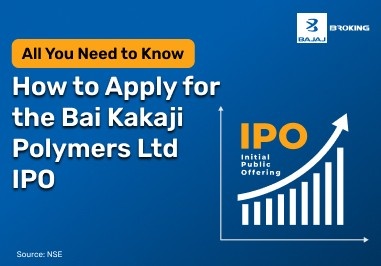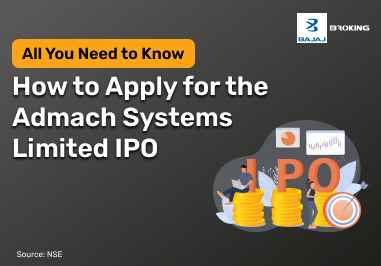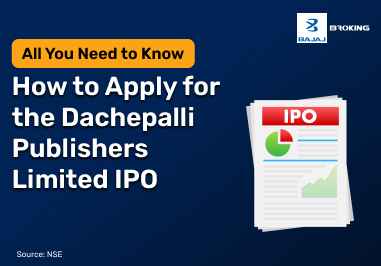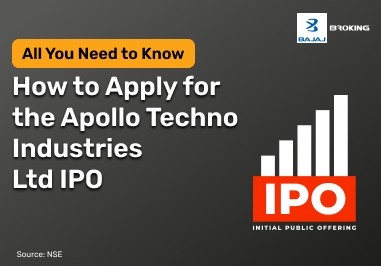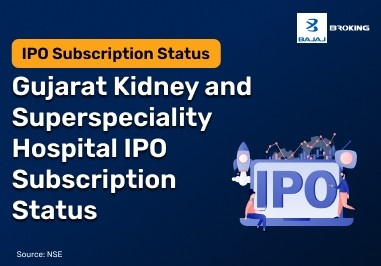What is Employees' Provident Fund (EPF)?
The Employees' Provident Fund (EPF) is a government-backed savings scheme designed to provide financial security to salaried employees after retirement. Managed by the Employees' Provident Fund Organisation (EPFO), EPF contributions are made by both the employee and the employer. These contributions accumulate overtime and earn interest, ensuring a stable financial cushion for the employee's future. Employees can withdraw their EPF under specific conditions, including retirement, unemployment, or certain emergencies.
EPF withdrawal eligibility criteria
To withdraw EPF, you must meet specific eligibility criteria based on different withdrawal scenarios. Below is a table outlining the main eligibility requirements:
Withdrawal reason
| Eligibility criteria
|
Retirement
| Allowed after reaching 58 years of age
|
Unemployment
| Can withdraw up to 75% after one month, remaining 25% after two months
|
Medical Emergencies
| Allowed for self or family members without minimum service requirement
|
Home Loan Repayment
| Requires at least five years of continuous service
|
Marriage/Education
| Allowed after seven years of service
|
When Can You Withdraw EPF?
You can withdraw your EPF amount in various situations, including:
- Retirement: Full withdrawal is allowed upon reaching the age of 58.
- Resignation or Job Change: Partial withdrawal is permitted after two months of unemployment.
- Medical Emergencies: Funds can be withdrawn for medical treatment without a waiting period.
- Marriage or Higher Education: Available after seven years of service.
- Home Loan Repayment: Allowed after five years of continuous employment.
New EPF withdrawal rules 2025
- Online withdrawals for faster processing: EPF withdrawal can now be done easily through the UAN portal, reducing delays and paperwork.
- Employer approval waived in certain cases: Under specific conditions, employer approval is no longer required for EPF withdrawal, making the process smoother.
- Continued interest on inactive accounts: Even if there are no further contributions, EPF accounts will continue to earn interest, ensuring better savings for employees.
- Tax benefits for long-term holders: Withdrawals after five years of continuous service remain tax-free, encouraging long-term savings.
- EPF withdrawal for business startups: Employees can now withdraw their EPF balance to fund their business ventures, providing financial support for entrepreneurship.
How to withdraw PF amount?
You can withdraw your PF amount either online or offline. Online withdrawal is the preferred method as it is quick and hassle-free. You need an activated UAN, linked Aadhaar, and a registered bank account. Offline withdrawal requires filling out the Composite Claim Form and submitting it to the regional EPFO office.
Steps to apply for EPF withdrawal online on the UAN Portal
- Log in to the EPFO UAN Member Portal.
- Go to the "Online Services" tab and select "Claim (Form-31, 19, 10C)".
- Verify your bank account details and click "Proceed for Online Claim".
- Select "PF Advance (Form-31)" and mention the purpose of withdrawal.
- Enter the withdrawal amount and upload necessary documents.
- Submit the request and track the status on the portal.
How to withdraw your EPF without UAN?
If you don’t have a Universal Account Number (UAN), you can withdraw your EPF manually. Visit the nearest EPFO office and fill out Form 19 for final settlement or Form 31 for partial withdrawal. Attach KYC documents like Aadhaar, PAN, and bank details for processing.
Types of EPF withdrawal: Complete vs Partial
Type
| Conditions
|
Complete withdrawal
| Allowed after retirement or two months of unemployment
|
Partial withdrawal
| Allowed for medical emergencies, home loans, marriage, or higher education
|
Documents and Forms Required for EPF Withdrawal
- Aadhaar Card
- Permanent Account Number (PAN)
- Cancelled Cheque
- Composite Claim Form (for offline withdrawal)
- Employer Certification (if required)
Process to enter Exit Date for PF withdrawal
To withdraw your EPF amount smoothly, it is essential to update your exit date on the EPFO UAN portal. The exit date represents your last working day in the organization and is required for claim processing. Without this update, your withdrawal request may get rejected or delayed. Employees can update their exit date themselves if their employer has not done it.
Follow the steps below to enter your exit date for PF withdrawal:
Steps to enter exit date in UAN portal
- Log in to the UAN Member portal: Visit EPFO UAN Member Portal and enter your UAN and password.
- Go to the ‘Manage’ Section: Click on the "Manage" tab in the dashboard.
- Select ‘Mark Exit’ Option: Under the dropdown, select the "Mark Exit" option.
- Enter last working date: Provide your last working date as per company records.
- Select exit reason: Choose the appropriate reason for leaving the organization (e.g., resignation, retirement, termination).
- Confirm and submit: Verify the entered details and submit the exit date update request.
- Check confirmation: After submission, you can check the status under the "Service History" section to ensure the exit date has been updated successfully.
Updating the exit date ensures a seamless EPF withdrawal process without unnecessary delays. If your employer has already updated the exit date, there is no need to repeat the process.
How to withdraw PF amount?
You can withdraw your PF amount either online or offline. Online withdrawal is the preferred method as it is quick and hassle-free. You need an activated UAN, linked Aadhaar, and a registered bank account. Offline withdrawal requires filling out the Composite Claim Form and submitting it to the regional EPFO office.
Steps to apply for EPF withdrawal online on the UAN portal
- Log in to the EPFO UAN Member Portal.
- Go to the "Online Services" tab and select "Claim (Form-31, 19, 10C)".
- Verify your bank account details and click "Proceed for Online Claim".
- Select "PF Advance (Form-31)" and mention the purpose of withdrawal.
- Enter the withdrawal amount and upload necessary documents.
- Submit the request and track the status on the portal.
How to withdraw your EPF without UAN?
If you don’t have a Universal Account Number (UAN), you can withdraw your EPF manually. Visit the nearest EPFO office and fill out Form 19 for final settlement or Form 31 for partial withdrawal. Attach KYC documents like Aadhaar, PAN, and bank details for processing.
Types of EPF withdrawal: Complete vs Partial
Type
| Conditions
|
Complete Withdrawal
| Allowed after retirement or two months of unemployment
|
Partial Withdrawal
| Allowed for medical emergencies, home loans, marriage, or higher education
|
Documents and Forms Required for EPF Withdrawal
- Aadhaar Card
- Permanent Account Number (PAN)
- Cancelled Cheque
- Composite Claim Form (for offline withdrawal)
- Employer Certification (if required)
Process to enter exit date for PF withdrawal
To withdraw your PF amount smoothly, you must update your exit date on the EPFO UAN portal. The exit date represents your last working day and is necessary for processing withdrawal requests. If this detail is missing, your claim may be delayed or rejected. Employees can update their exit date themselves if their employer hasn’t done it.
Steps to enter exit date in UAN Portal
- Log in to the UAN member portal – Visit the EPFO UAN Member Portal and enter your credentials.
- Go to the ‘Manage’ section – Click on the "Manage" tab in the dashboard.
- Select ‘Mark Exit’ option – Under the dropdown, select "Mark Exit".
- Enter last working date – Provide your last working date as per your company’s records.
- Select exit reason – Choose the reason for leaving (e.g., resignation, retirement, termination).
- Confirm and submit – Verify the details and submit your exit date update request.
- Check confirmation – After submission, check the "Service History" section to ensure the update was successful.
Updating your exit date ensures that your EPF withdrawal request is processed smoothly and without delays.
EPF withdrawal taxability
The tax implications of EPF withdrawal depend on the duration of service and the withdrawal amount. While EPF is meant to be a long-term savings scheme, withdrawing funds before completing five years of service can attract tax deductions. Understanding the tax rules can help you plan your withdrawals wisely.
If you withdraw your EPF balance before completing five years of continuous service, the amount is taxable under certain conditions. A TDS (Tax Deducted at Source) of 10% is levied if the withdrawal amount exceeds Rs. 50,000 and the PAN is provided. If you fail to provide your PAN, the TDS rate increases to 30%. Additionally, the withdrawn amount is added to your taxable income and taxed as per your income slab.
However, EPF withdrawals after five years of service are entirely tax-free. This rule applies as long as the employee has continuously contributed to the EPF account. If an employee switches jobs and transfers their EPF balance instead of withdrawing, the years of service are carried forward, ensuring continued tax benefits.
How to check PF withdrawal status?
You can check your EPF withdrawal status online using the EPFO portal or the UMANG mobile app. Here’s how:
Steps to check PF withdrawal status online
- Visit the EPFO member portal: Go to the official EPFO UAN Portal.
- Log in with UAN and Password: Enter your UAN and password to access your account.
- Navigate to ‘Track Claim Status’: Click on the "Online Services" tab and select "Track Claim Status".
- Enter Claim Details: Provide the necessary claim reference number.
- View Status: Click "Submit" to check your claim’s approval, rejection, or pending status.
Alternatively, you can check your EPF withdrawal status via the UMANG app or by calling the EPFO toll-free number (14470).
Conclusion
EPF withdrawal is a simple process when done online. Understanding the eligibility criteria, withdrawal options, and tax implications ensures a smooth claim process. Whether you are retiring, switching jobs, or facing financial emergencies, withdrawing your PF amount can provide the necessary financial support.
Open an account today to start investing in your future and manage your finances smartly.
Disclaimer: Investments in the securities market are subject to market risk, read all related documents carefully before investing.
This content is for educational purposes only. Securities quoted are exemplary and not recommendatory.
For All Disclaimers Click Here: https://www.bajajbroking.in/disclaimer


